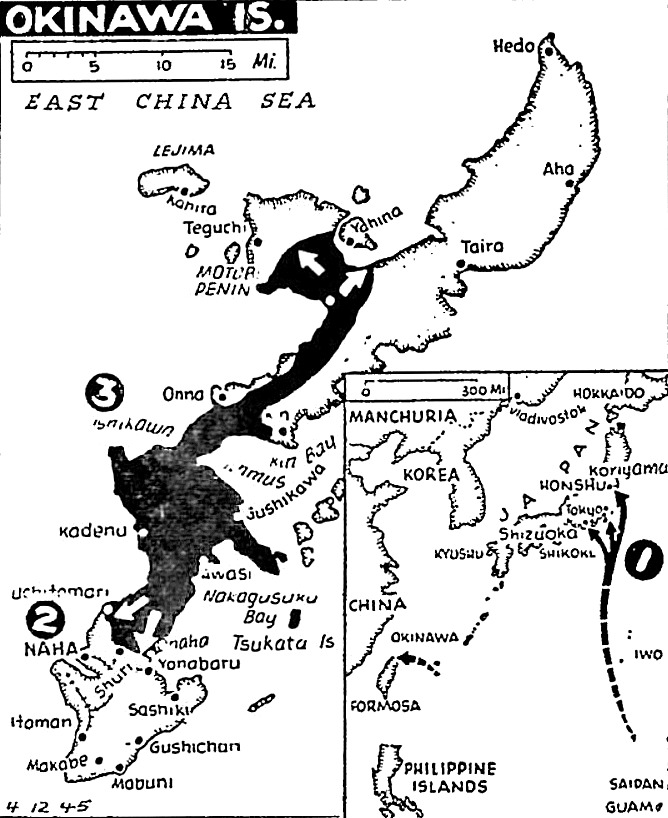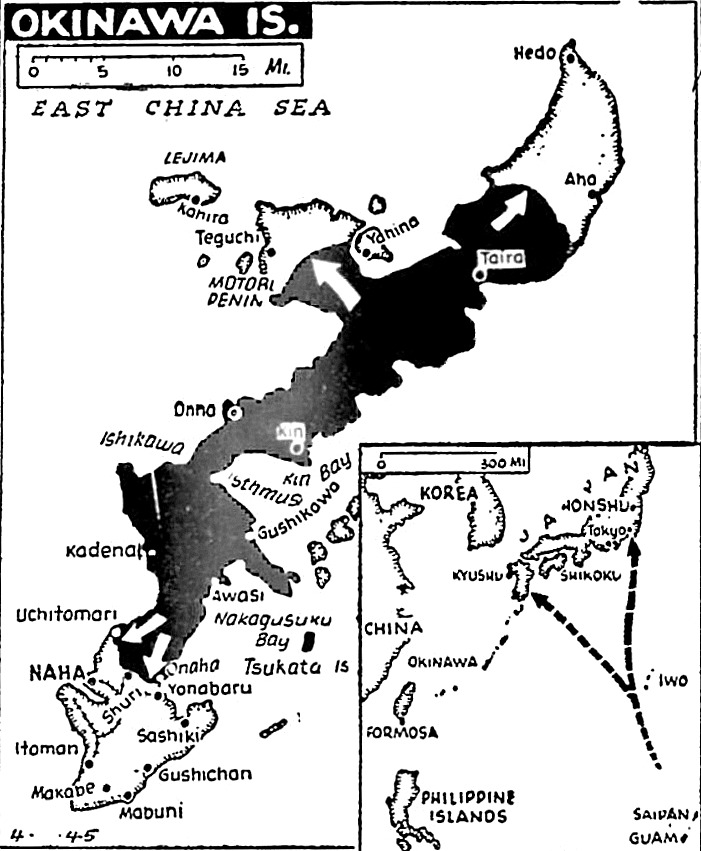Lieutenant rescued after spending four hours on raft in midst of Jap task force
By Mac R. Johnson, United Press staff writer
ABOARD ADM. TURNER’S FLAGSHIP, Okinawa – A young Navy pilot parachuted from his burning plane into the middle of the doomed Jap task force off Kyushu Saturday. He watched from the water for four hours while the Japs tried futilely to save their 40,000-ton battleship Yamato.
The pilot, Lt. (j.g.) William Ernest Delaney of Detroit was rescued under the cover of smoke from the burning Yamato by a twin-engined Navy patrol bomber piloted by Lt. James R. Young of Central City, Kentucky, while a second bomber circled the area to divert any enemy fire.
Four hits on Yamato
Lt. Delaney told newsmen today that he scored four direct hits on the super-battleship with 500-pound bombs from 1,400 feet, but the resulting explosions set his dive bomber afire.
He said:
There was a loud explosion under the fuselage. Then the cockpit filled with smoke and fumes. One wing was on fire.
I was afraid the plane would explode and ordered my crew (runner and radioman) to jump. They bailed out five miles southwest of the Jap task force. I watched their parachutes open. Then I jumped.
Warships circle him
Lt. Delaney said he landed in the water in the middle of the enemy task force and inflated his life raft. Enemy warships circled him wildly. He stayed out of the raft most of the time so it would be more difficult for the Japanese to detect him.
Once a Jap destroyer approached within 400 yards of the raft, but pulled away when the crew apparently decided the raft was empty.
“At first, I was so cold and tired when the Jap ‘can’ approached, I thought of giving myself up,” Lt. Delaney said. “But I decided they might only shoot me, so I stayed behind the raft.”
Yamato dead in water
Lt. Delaney said the Yamato was dead in the water and never did change its position in relation to him, indicating that both he and the battleship were drifting in the same direction at the same time.
He said:
I saw planes of our second main wave attack the enemy force about 2 p.m. At least one more bomb hit was scored on the Yamato, because I saw a huge pillar of black smoke go up from her.
Over on the horizon, there was a terrific flash and explosion. I guess that was a Jap destroyer blowing up.
Lt. Delaney saw another destroyer approach close enough to throw a line to the Yamato, but it pulled away when the second wave of planes appeared.
Plane spots raft
One of the planes spotted Lt. Delaney’s raft and dropped dye to mark the position. Lt. Young and Lt. Richard L. Simms of Atlanta, Georgia, piloting another patrol plane, spotted the marker.
Lt. Simms said:
The Yamato was enveloped in clouds of black smoke. We flew over the area at 100 feet and saw hundreds of Jap survivors from the sunken ships clinging to bits of wreckage. They didn’t have boats or rafts.
Young went down to pick up Delaney while I circled the remaining Jap ships to keep their attention.
Lts. Simms and Young both returned to their base. The patrol planes sent out to relieve them could find no trace of the Yamato, which had sunk in the meantime. Two cruisers and three destroyers were also sunk in the air-naval battle and two more left burning.
It was Lts. Young and Simms who spotted the enemy task force early Saturday. Their radio message brought swarms of carrier planes.

